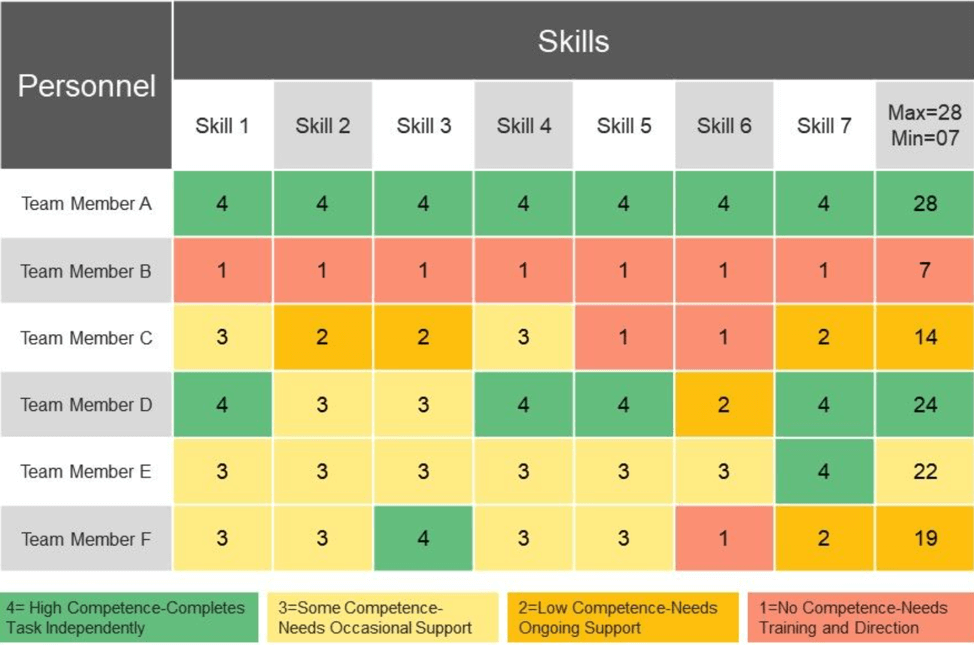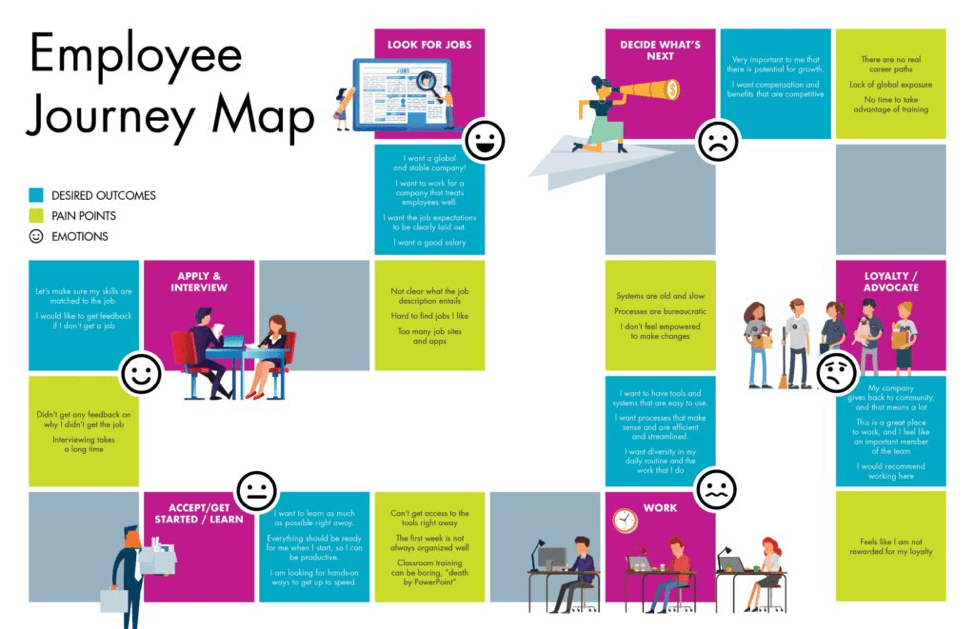The role of a General Counsel today is more than ensuring a legal team diligently performs routine operations. A person in this position is expected to run a legal department as a business, meaning it should generate revenue, not be a mere cost center. In particular, legal teams are supposed to create economic value for a company by effectively resolving critical law-related issues such as tax structuring, IP management, and litigations.
Yet, there is one problem. To deal with complex tasks, employees need to have strong expertise in diverse regulatory fields. However, unlike their colleagues in other departments, legal personnel rarely have many opportunities to acquire new knowledge or grow professionally. Doing the same work everyday limits them from handling greater challenges.
In this blog post, we will share some tips on how to nurture the talent of your legal staff so they stay motivated and make a greater contribution to the company’s development.
Tip 1: Create a Skill Matrix
A skill matrix, also known as a team competency matrix or star chart, is a spreadsheet displaying a list of employees’ competencies and their skill levels without taking into account specific roles or positions. Basically, it shows the ‘resources’ possessed by a legal department.

In a basic version of the matrix, a qualification scale may be represented with symbols. For example, you may use a dash (”?”) to indicate that a person lacks relevant competency, a checkmark (‘✔︎’?) to show that he or she has sufficient skills to work in specific areas, and a start (‘★’?) to point out the employee’s ability to solve complex problems. Alternatively, you can also use numbers for ranking skill levels (e.g. 0 – No Skill, 1 – Basic knowledge, 2 – Intermediate level, 3 – Advanced level, 4 – Expert).
How does a skill matrix help you nurture legal talent? First, it provides you with clear information about the legal department’s current capabilities. With a skill matrix, you can more easily identify opportunities for employees’ professional development. For instance, team members who have already mastered skills in a particular legal field (e.g. document drafting) will be able to hone in on other competencies their department needs (e.g. dispute resolution).
It is also a great idea to allow team members to add notes to the skill matrix. Information about employees’ professional goals and desires will help you manage the relocation of roles, when needed, and improve your talent retention rate.
In addition, the development of internal cross-functionality will allow you to reduce costs for external counsels. Building the skill matrix for your legal team from scratch may take time, but it will be completely worth it.

Tip 2: Prepare an Employee Story Map
You may have heard of a user story map. It is a chart used by development teams to visualize the way users interact with a digital product. Once all the touchpoints are mapped out, programmers and UX designers can identify potential usability issues and create a better user experience. If you think of your legal team as internal ‘customers’?, their interactions with the organization can be enhanced in a similar way.
To build an employee story map, you will first need to collect important information about legal personnel. Here are a few brief guidelines:
- Determine employee types. Although a legal ops specialist and an IP support manager work in the same department, they likely have different experiences at a company. Of course, some procedures and challenges may be common for all team members. But the goal is to identify areas of improvement for every employee. This means, building a one-size-fits-all map isn’t an option.
- Define all stages of an employee journey. It’s crucial to cover all points that are important for each employee type. In most cases, a journey will begin when an employee applies for a vacancy and ends when he or she leaves an organization. For example, the stages of an employee journey may look like this: Hiring -> Adaptation -> Meeting initial KPIs -> Growth and Development -> Dismissal.
- Elaborate more details. If you want to create an employee map that reflects an actual situation in your legal department, listing the general stages isn’t enough. You will need to specify details on how an employee interacts with an employer at each touchpoint. For example, how does the hiring process usually work? Or, what are the employee’s main pain points? It’s better not to guess, but ask for personal feedback. It would be ideal to talk to former and potential employees as well.
- Piece the map together. Last, use the findings to create employee maps for your legal team. You may use any format you’d like.

It’s almost inevitable that your legal department will change over time. So, be sure to keep your employee maps relevant and amend them as needed. Up-to-date information on what disappoints employees and what makes them happy will help you create a successful environment for the growth of your legal team.
Tip 3: Get Rid of Routine
Performing monotonous and repetitive work can quickly bore any employee and there is no exception when it comes to being a legal professional. If the department is swamped with routine tasks, employees won’t have the time or motivation to do more than their normal workload. In addition, the abundance of mundane and lengthy legal operations may create a feeling of professional stagnation among team members. The latter often leads to high employee turnover.
So, what are the options? Automation and legal process optimization can significantly improve the situation with paperwork in a legal department. For instance, AXDRAFT allows you to reduce the time spent drafting routine documents (NDAs, DPAs, SLAs, etc.) by more than ten times. The service streamlines the process of document generation by providing legal teams with dynamic templates that are customized to each user depending on their position and answers to a few simple questions.
With the AXDRAFT solution, you can free up a lot of time for your staff, allowing them to learn and focus on more challenging tasks.
Conclusion
A motivated and engaged staff is the most valuable asset of any business. Employees who understand their purpose within an organization and can clearly see opportunities for growth, work more productively and ultimately generate higher profits. This is why nurturing legal talent should be a top priority for GC and other senior executives. Skill matrix, employee story maps, and AXDRAFT document automation solution are the perfect tools to help you create an inspired and highly-qualified team.